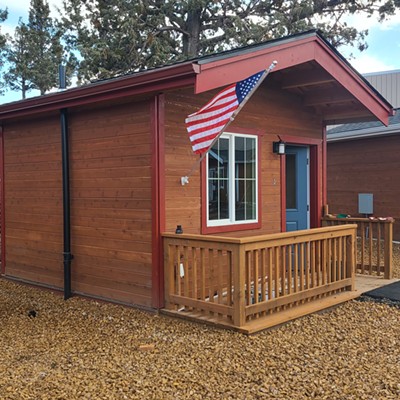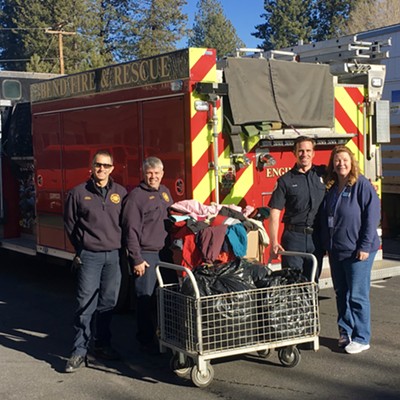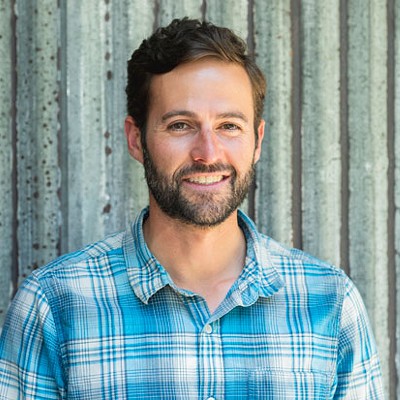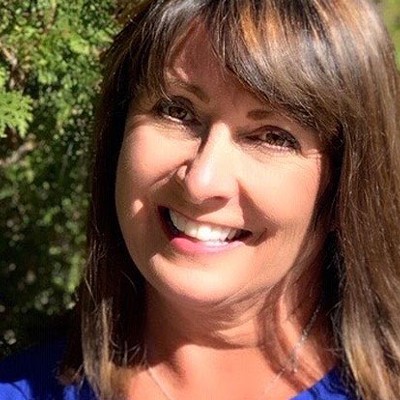he words on the marquee outside Central Oregon Veterans Outreach pretty much say it all: NEED CANNED FOOD TENTS TARPS PROPANE COLD WEATHER GEAR. COVO is ramping up for its busiest time of year—the winter months—when veterans and others are most in need.
At COVO, no one is turned away, and as Executive Officer Kathy Skidmore points out, "60 percent of people who come in here are non-veterans." COVO helps about 300 people a month, but that number climbs to about 500 during the winter.
COVO does have vet-specific funding, she says, that helps sponsor five beds at the Bethlehem Inn shelter, as well as a Home of the Brave near Bend's Mountain View High School that includes six beds for veterans. There, veterans can live for up to two years while they get back on their feet. "It's a long journey from being homeless to getting a house and being employed," Skidmore adds.
"We're dealing with a veteran now who has been 30 years' homeless, now in his early 60s. You have to build trust with people in order to get them services." After six months of working with the man, COVO now has him living in the Home of the Brave, Skidmore says.
60 percent of people who come in here are non-veterans.
tweet this
Skidmore and Executive Director JW Terry also tell the story of veteran Ron Moore, who volunteered at COVO for two years while being six years' homeless.
"We've managed to make him a part-time employee here," says Skidmore. "He's a great, great guy." COVO was also able to get Moore into housing. On a typical Thursday morning, Moore sits behind a desk, serving on the front line for those who walk through the doors.
Terry spent 32 years in the U.S. Navy, worked for a sheriff's department in Arizona, and taught the Junior ROTC program at Mountain View High School for 12 years before joining COVO nearly four years ago. Skidmore has worked at COVO for about four years.
Terry is also the president of the Bend chapter of Band of Brothers, which meets each Monday at Jake's Diner in Bend. More than 100 veterans attend on a typical Monday. Terry says it's the largest regular gathering of World War II-era veterans in Central Oregon.
COVO is also connected to nearly 30 low-income apartments and houses throughout Central Oregon and is looking to build more.
In addition, "We're seeing an increase in the number of women veterans," Skidmore says. The rate of women veterans used to be nearly zero, but now comprises about 30 percent of COVO clients, Skidmore says. However, women often do not identify as veterans, Terry says. He tells a story of how a woman approached him in a grocery store when he was wearing his Band of Brothers jacket. They talked for about 20 minutes before she finally told him that she was also a vet.
"We know they're out there," Skidmore says.
We're seeing an increase in the number of women veterans. The rate of women veterans used to be nearly zero, but now comprises about 30 percent of COVO clients." — Kathy Skidmore
tweet this
As a nonprofit, COVO's tight budget is dependent on grants and donations. It has 10 employees, the majority non-veterans, and about 25 steady volunteers. Besides working in the office, some volunteers take water, food and clothing out to local homeless camps.
Skidmore and Terry say that homelessness is the biggest problem veterans face. "We have a housing problem; it's not an issue—it's a housing crisis," Terry says.
The core mission of COVO is to help keep people "warm, fed and dry," the two say. "We're not trying to encourage homelessness, but trying to keep people alive," Skidmore says.
"We've built a reputation for treating them like people," Terry says. "They just need a little respect and help."
Skidmore says she sees homelessness increasing in Central Oregon, especially following the recent closings of homeless camps around Redmond and elsewhere. Meanwhile, people are camping wherever they can, living in their cars, "hiding in plain sight," Skidmore says.
Terry says Central Oregon's veteran population is about 18,000, including a lot of retirees.
"Younger veterans aren't coming forward yet," Terry says. "Sometimes it's hard to ask for help."
Terry relates a common scenario for younger veterans. A typical 19-year-old combat soldier may be responsible for others' lives during a tour of duty, and then comes home and has to fit into normal society. Terry says that veteran has to ask, "How did I take care of my men for a year, and now I can't even take care of my family?" He adds, "I call it a real kick in the ass for most veterans."
Skidmore explains more of the COVO philosophy: "We try to reach out to the community and reach out to our veterans and get them that one more step to where they feel good about themselves and the community they live in. It's the community and opportunities that help veterans."


























